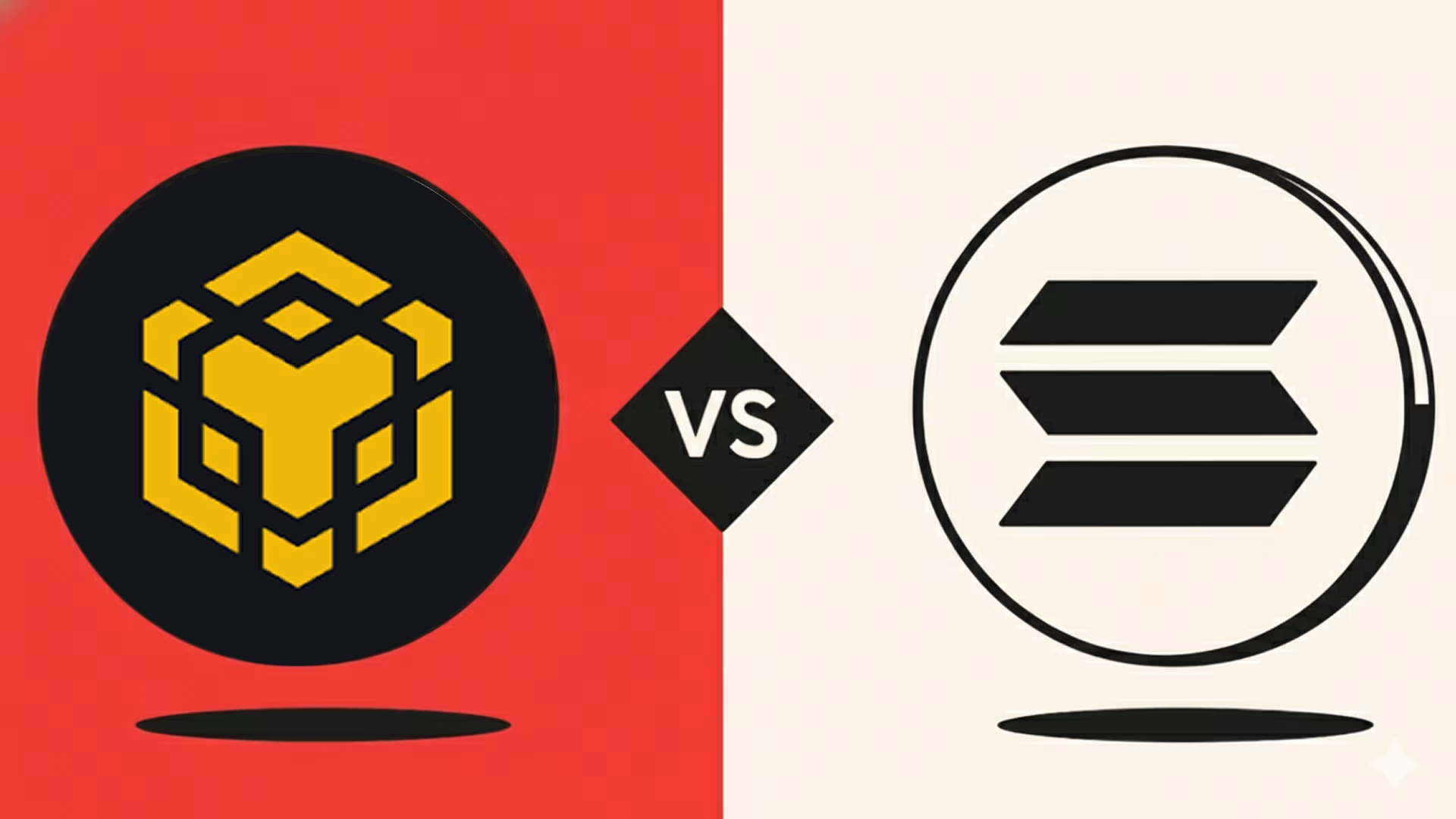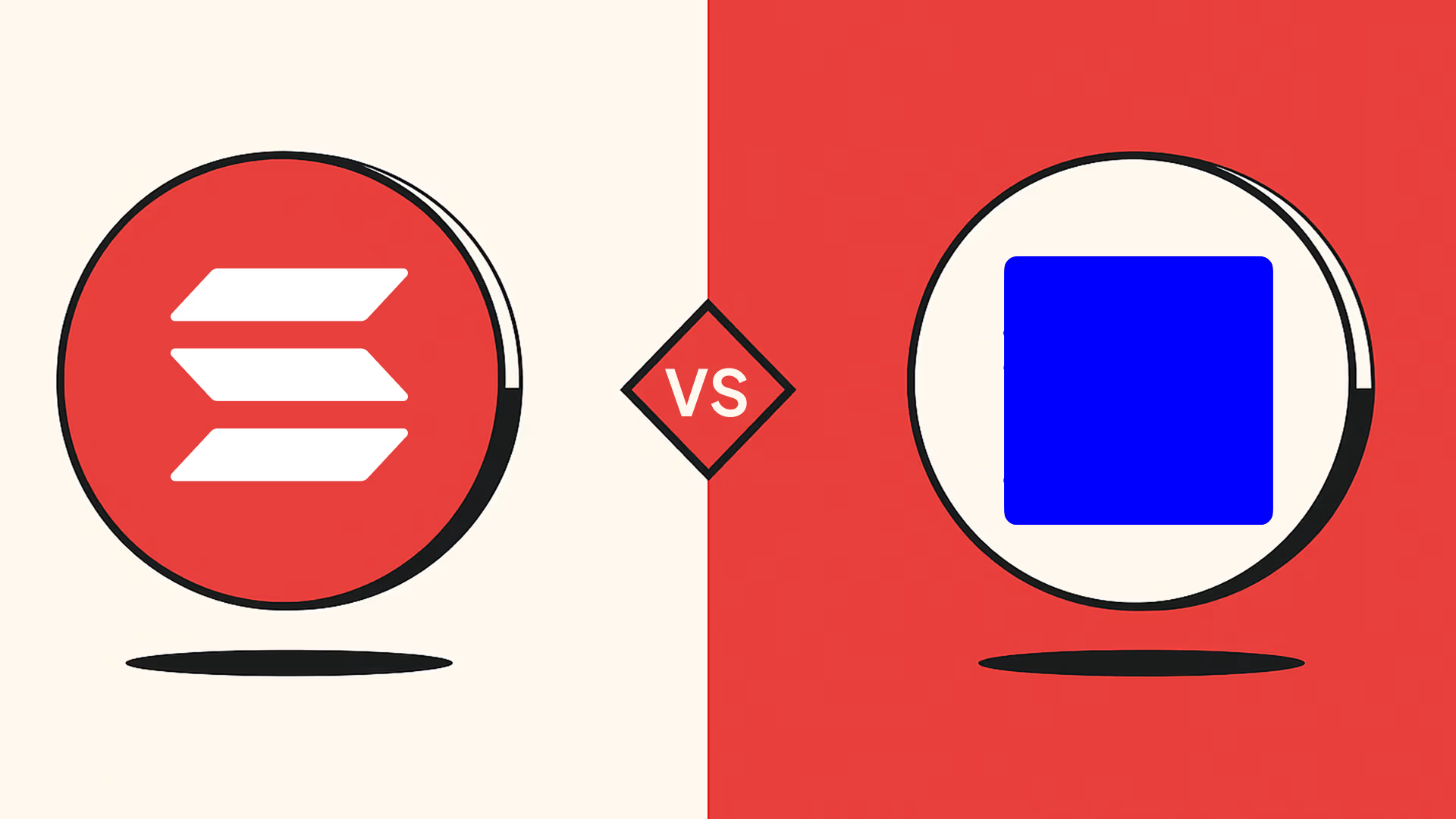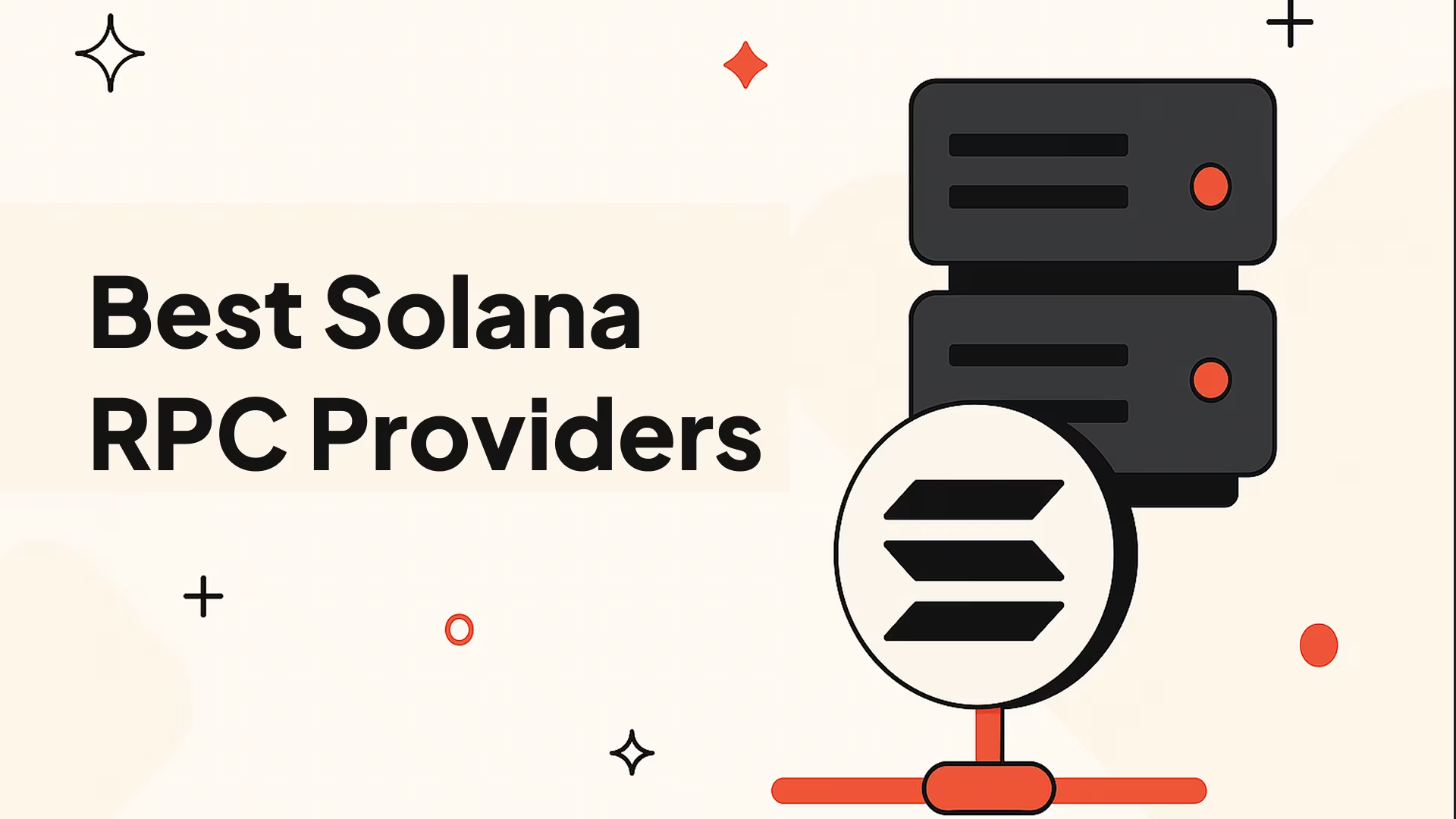Solana vs Binance Smart Chain (BSC): Which Blockchain Is Better in 2025? (Pros and Cons)
Key Takeaways
Transaction Speed: Solana processes 3,000–5,000 TPS in real conditions (up to 65,000 TPS theoretical), compared to ~160 TPS on BSC.
Cost Efficiency: Solana’s average fee is ~$0.00025, about 200× cheaper than BSC’s $0.03–$0.06 per transaction.
Ecosystem Strength: Solana hosts 1,200+ dApps and $8B TVL, while BSC supports 5,000+ dApps and $4.5B TVL.
Decentralization: Solana operates more than 2,500 validators, while BSC has 50–100, giving Solana stronger decentralization and censorship resistance.
Introduction
The competition between Solana and BSC (Binance Smart Chain) remains one of the most watched battles in 2025 as both blockchains fight for leadership in the Layer-1 space.BSC leverages Binance’s global user base, deep liquidity, and full Ethereum compatibility, giving it a strong position among retail users and EVM developers.Solana, on the other hand, leads in transaction speed, scalability, and cost efficiency, powering thousands of low-fee, high-performance applications. As both ecosystems expand rapidly across DeFi, NFTs, and consumer apps, the question for 2025 is clear: which blockchain delivers greater value for developers, users, and investors in the next growth cycle?
What Is Solana
Solana is a high-performance Layer-1 blockchain launched in 2020 by Anatoly Yakovenko.It combines Proof of History (PoH) with Proof of Stake (PoS) to achieve exceptional scalability, capable of up to 65,000 transactions per second (TPS) in theory and 3,000 – 5,000 TPS under real-world conditions, with block times under 500 milliseconds and average finality of 2–3 seconds.
Built to solve blockchain scalability limits, Solana powers decentralized exchanges, payment rails, gaming, and consumer-grade applications that demand instant execution and minimal fees.
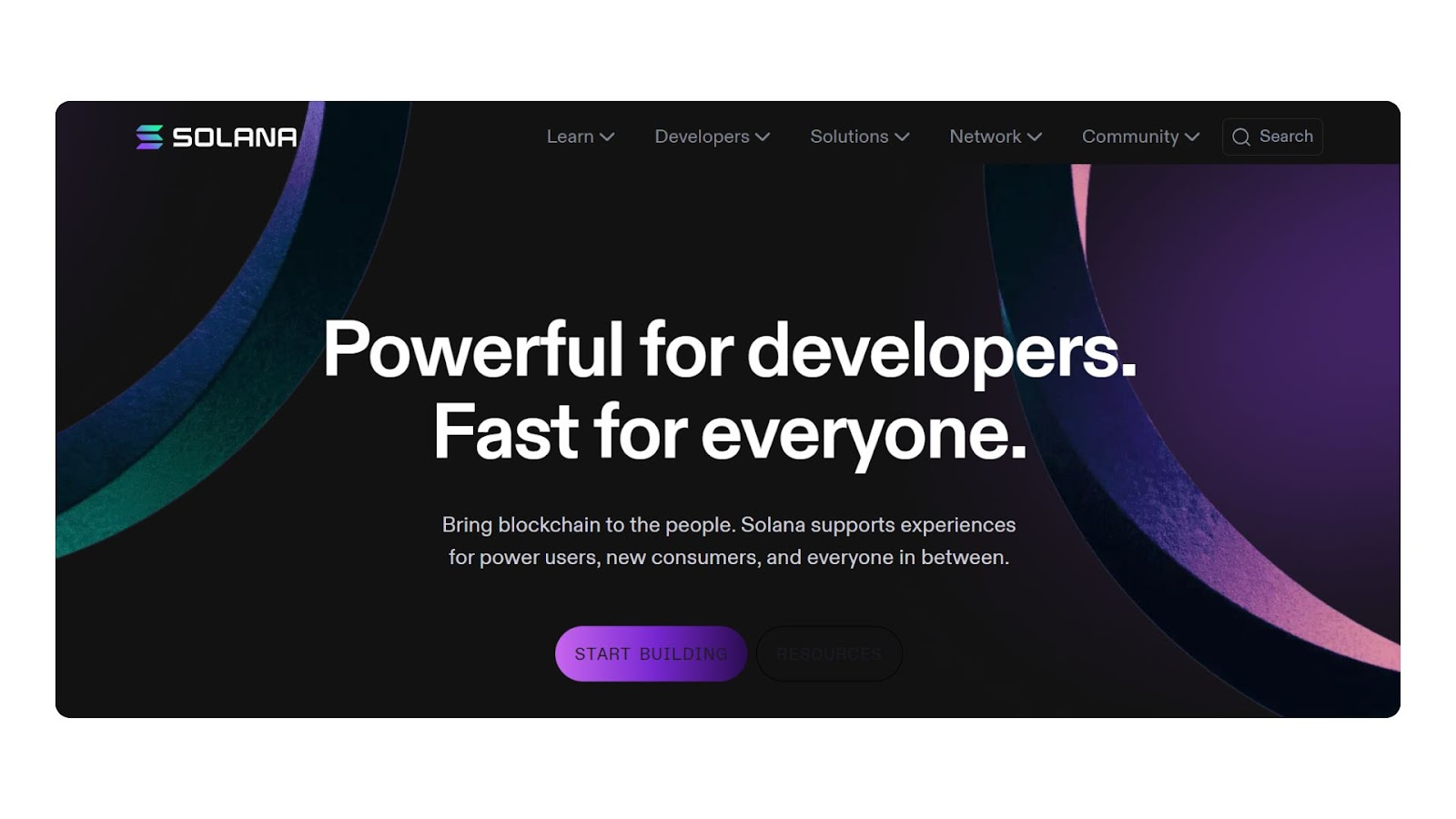
Solana Development Environment
Languages: Rust (primary), C, C++
Framework: Anchor (main smart-contract SDK)
Libraries: Solana Web3.js, Metaplex SDK
Developer count: 3,000+ active developers
Ecosystem Support: Helius, Backpack, Solana Foundation
Solana’s Rust-based environment presents a steeper learning curve than Solidity, yet it attracts experienced engineers focused on high-performance, low-latency applications.
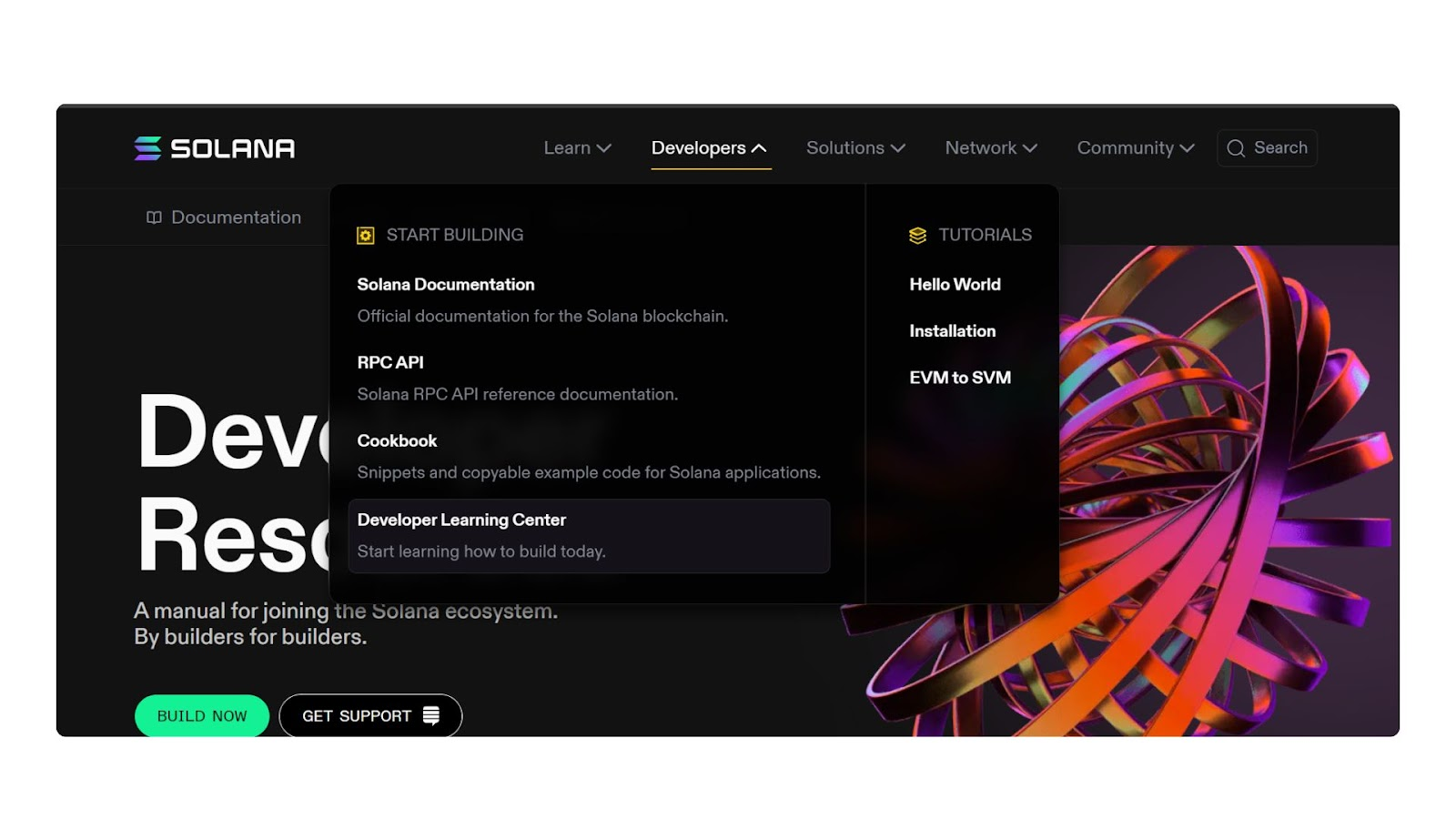
Solana Decentralization and Security
Solana operates with more than 2,500 validators across over 40 countries, maintaining one of the most decentralized validator networks among major Layer-1 blockchains. There is no fixed minimum stake requirement, allowing new validators to join with modest hardware and stake commitments.
After experiencing several outages between 2021 and 2023, Solana’s core upgrades,such as QUIC networking, stake-weighted quality-of-service (QoS), and localized fee markets,have boosted network stability to 99.9% uptime throughout 2024–2025.
In decentralized finance (DeFi), Solana now secures about $8 billion in total value locked (TVL) and regularly accounts for 40–50% of global on-chain DEX volume, led by high-performance protocols such as Jupiter, MarginFi, and Kamino.
In the NFT market, Solana’s low minting fees and compressed NFT (cNFT) standards have enabled over $2 billion in trading volume in 2025, with leading collections including Mad Lads, Claynosaurz, and SMB Gen3 driving growth across platforms like Tensor and Magic Eden.
Solana Pros and Cons
Advantages of Solana (Pros)
- High-Speed Performance: Average block times around 400–500 milliseconds with ~2.5-second finality, among the fastest in crypto.
- Ultra-Low Fees: Typical transaction costs average $0.00025, enabling efficient microtransactions and large-scale dApp use.
- Scalable Architecture: Upgrades such as local fee markets and stake-weighted QoS help prevent congestion even during peak network activity.
- Strong Decentralization: More than 2,500 validators operate globally, ensuring censorship resistance and resilience.
- Ecosystem Momentum: Rapidly expanding DeFi, consumer, and enterprise adoption, supported by major partners like Visa, Shopify, and Google Cloud.
Disadvantages of Solana (Cons)
- Historic Outages: Previous downtime (2021–2023) impacted confidence, though the network now maintains 99.9% uptime since 2024.
- Steeper Learning Curve: The Rust-based environment requires more technical expertise compared to Solidity, making onboarding slower for new developers.
What Is BSC (Binance Smart Chain)
Binance Smart Chain (BSC), now called the BNB Chain, launched in 2020 as a parallel network to Binance Chain to support smart contracts and decentralized applications. It uses a Proof of Staked Authority (PoSA) consensus model that blends delegated staking and validator authority, enabling 3-second block times, low transaction costs, and efficient network performance.
BSC is fully compatible with the Ethereum Virtual Machine (EVM), allowing developers to deploy Ethereum-based smart contracts and dApps with minimal code changes. Powered by Binance’s global liquidity, BNB token economics, and exchange integration, BSC has evolved into one of the leading ecosystems for DeFi, GameFi, and token launches, with more than $4.5 billion in total value locked (TVL) across major protocols such as PancakeSwap, Venus, and Alpaca Finance.
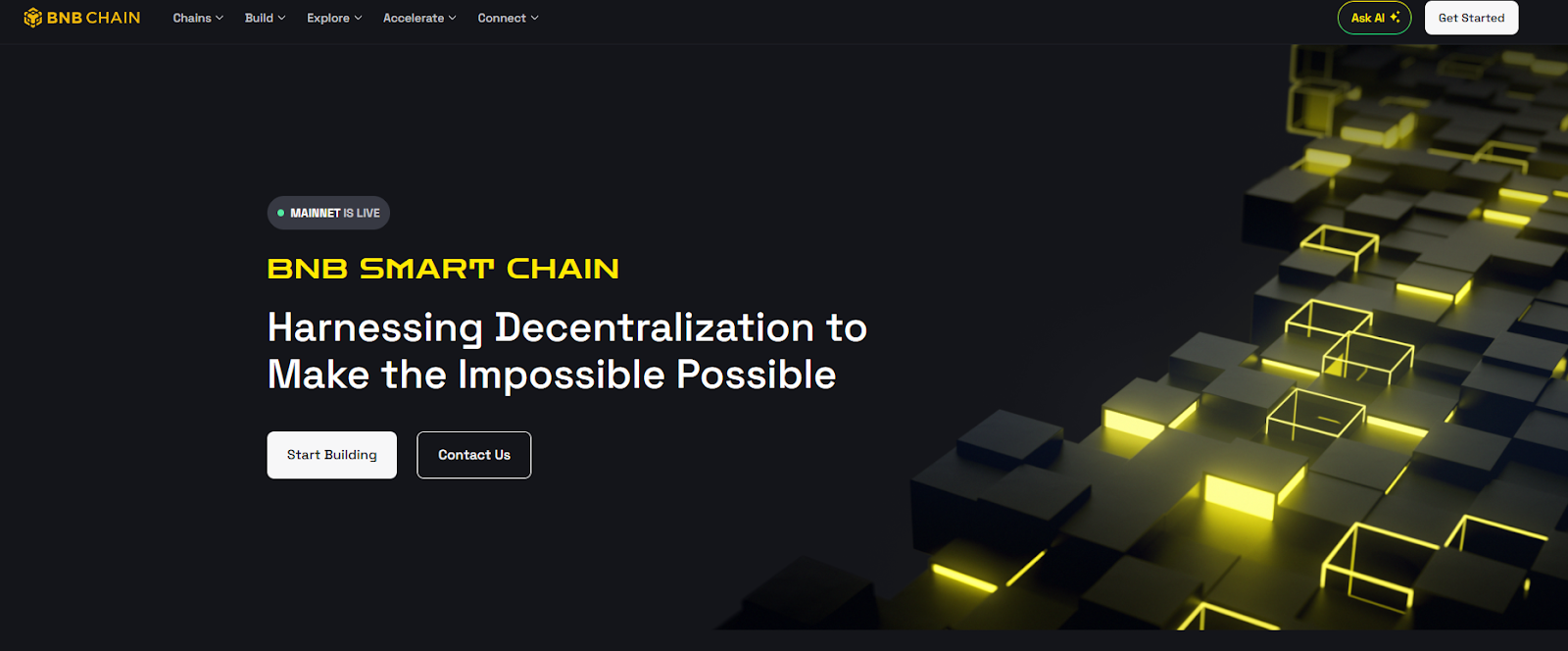
BSC Development Environment
Languages: Solidity, Vyper
Frameworks: Hardhat, Truffle, Brownie
Libraries: Web3.js, Ethers.js
Active Developers (2025): Approximately 6,000 (Electric Capital Report 2025)
Ecosystem Partners: PancakeSwap, Venus, LayerZero, zkBNB
With EVM compatibility and low gas fees averaging around $0.05, BSC remains one of the most accessible environments for developers migrating from Ethereum or deploying scalable DeFi projects.

BSC Decentralization and Security
The BNB Smart Chain (BSC) operates with around 50–60 active validators selected from a pool of roughly 100 candidates, many of which are closely associated with Binance or approved through its governance process.
This Proof of Staked Authority (PoSA) model enables fast block confirmations of about three seconds, contributing to high throughput and stable performance.
However, the limited validator set also makes BSC more centralized than other major Layer-1 networks, raising ongoing questions about censorship resistance and long-term network independence.
As of late 2025, BSC secures over $4.5 billion in total value locked (TVL), primarily concentrated in leading DeFi protocols such as PancakeSwap, Venus, and Alpaca Finance, reflecting its strong liquidity base despite structural centralization.
BSC Pros and Cons
Advantages of BSC (Pros)
- Full EVM Compatibility: Developers can deploy or migrate Ethereum-based smart contracts with minimal changes using familiar tools like Hardhat and MetaMask.
- Low Transaction Fees: Average transaction costs range between $0.03 and $0.06, making BSC significantly cheaper than Ethereum Layer 1.
- High Liquidity and Large User Base: Supported by Binance’s global exchange, BSC maintains millions of active wallets and deep DeFi liquidity through protocols such as PancakeSwap and Venus.
- Exchange Integration: Direct connectivity with Binance Exchange simplifies token transfers, staking, and fiat on-ramps for retail users.
Disadvantages of BSC (Cons)
- Centralized Validator Structure: With about 56 active validators, most governed or approved by Binance, BSC trades decentralization for efficiency.
- Security History: The network has experienced several bridge and protocol exploits, including the major BNB Bridge incident in 2022, which raised long-term trust concerns.
- Lower Performance: BSC’s ~160 TPS throughput is far below Solana’s 3,000–5,000 TPS, limiting scalability for high-frequency use cases.
Performance Comparison
Investment Perspective
Solana Investment Thesis
Bullish Factors
- Performance Edge: Solana delivers 3,000–5,000 TPS in real-world conditions with the lowest fees in the industry (~$0.00025 per transaction).
- Major Partnerships: Collaborations with Visa, Google Cloud, Shopify, and Helium expand its real-world utility.
- Ecosystem Growth: Over $8B in DeFi TVL and a thriving NFT and consumer app ecosystem led by Jupiter, Kamino, and Backpack.
- Mobile Expansion: Integration through the Saga phone and Backpack Wallet reinforces Solana’s presence in mobile Web3 adoption.
Risk Factors
- Ongoing reliance on Solana Labs for core network development.
- Regulatory uncertainty surrounding SOL’s classification in the U.S. and other jurisdictions.
- The Rust-based programming model presents a higher barrier to entry for new developers compared to EVM chains.
BSC Investment Thesis
Bullish Factors
- Retail Adoption: BSC benefits from Binance’s massive global user base, exchange integrations, and fiat on-ramps.
- EVM Compatibility: Familiar development environment using Solidity, Vyper, and standard Ethereum tools.
- Strong Liquidity: Around $4.5B in DeFi TVL with deep liquidity across PancakeSwap, Venus, and Alpaca Finance.
- Cross-Chain Expansion: Integrations with LayerZero and zkBNB enhance scalability and interoperability.
Risk Factors
- High Centralization: Only ~56 active validators, most approved through Binance governance.
- Slower Innovation: Focus on stability and EVM compatibility limits experimentation relative to newer L1s.
- Institutional Hesitation: Centralized governance structure may reduce institutional confidence compared to more decentralized networks.
Future Development Roadmaps
Solana 2025–2026 Priorities
- Firedancer Validator Client: A new client built by Jump Crypto to enhance performance and multi-client resilience, targeted for mainnet release in late 2025–2026.
- Token-2022 Standard: Expanding Solana’s SPL framework with features like transfer hooks, interest-bearing tokens, and richer metadata for institutional-grade tokenization.
- Concurrent Merkle Trees: Enabling efficient state compression for scalable on-chain storage, already powering compressed NFTs (cNFTs).
- Saga Mobile Ecosystem: Broader rollout of the Solana Mobile Stack (SMS), integrating native apps and new Android partnerships following the Saga launch.
- Zero-Knowledge and Compliance Tools: Research into privacy-preserving proofs and compliance solutions for enterprise and regulated applications.
BSC (BNB Chain) 2025–2026 Priorities
- zkBNB Rollups: Expansion of zero-knowledge rollups to scale DeFi and NFT applications while enhancing privacy.
- Cross-Chain Interoperability: Strengthening bridges between BNB and Ethereum, and exploring connectivity with Solana via LayerZero and Wormhole.
- Validator Decentralization: Governance efforts to broaden validator participation and increase independence from Binance oversight.
- Institutional DeFi Infrastructure: Growth of Venus Pro and Greenfield to support regulated, compliant financial applications.
- AI-Powered Analytics: Early-stage exploration of AI-based fraud detection and on-chain transaction monitoring for enhanced network security.
Conclusion
The Solana vs BSC comparison in 2025 highlights two distinct paths in blockchain innovation. Solana focuses on speed, scalability, and low-cost execution, making it ideal for high-volume apps like trading, gaming, and DeFi. BSC (BNB Chain) emphasizes EVM compatibility, liquidity, and ease of use, giving developers and retail users a familiar, accessible ecosystem.
Solana offers the stronger foundation for performance-driven projects, while BSC excels in onboarding and exchange integration. As the industry moves toward a multi-chain future, Solana drives technical progress and BSC ensures accessibility for the next wave of users.

